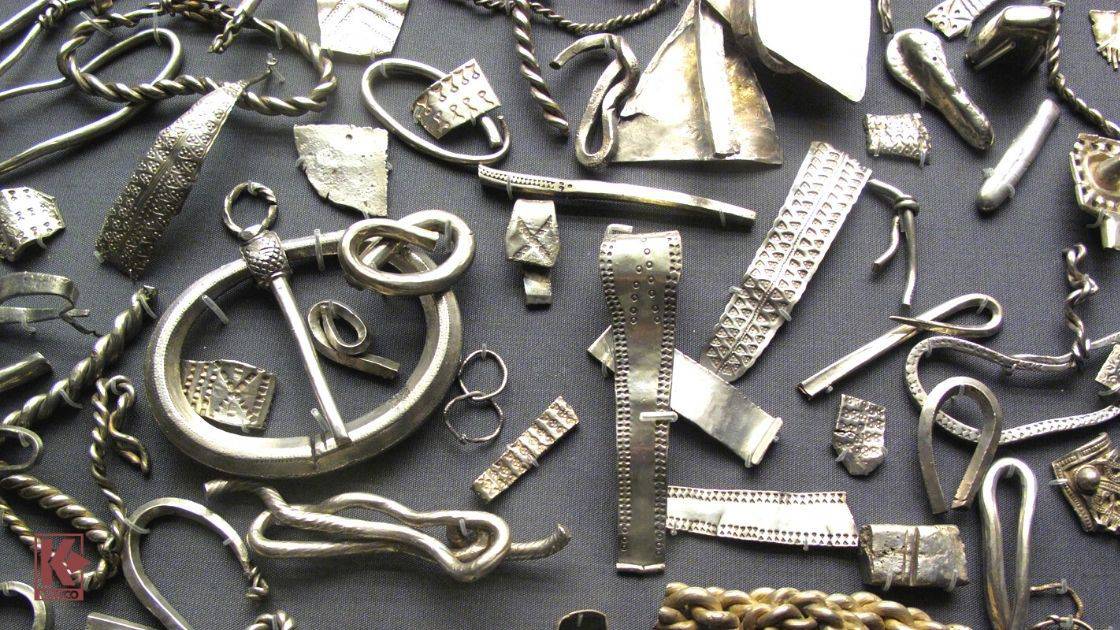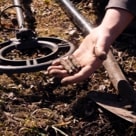The Cuerdale Hoard: The Largest Viking Hoard of Silver
Published by Sam Jacobs on 03/22/21
From the waning days of the Anglo-Saxon kingdoms of England comes the Cuerdale Hoard. Unlike the Hoxne Hoard, which was Romano-British, and the Staffordshire Hoard, which was from Mercian Anglo-Saxons, this Hoard came from the Vikings, who ruled over a great deal of England prior to the arrival of the Normans in 1066. More than just English treasure, there were also a lot of Carolingian objects from the Continental empire of Charlemagne.
The Hoard is also noteworthy because it did not contain gold. Instead, the Cuerdale Hoard was composed almost entirely of silver, mostly coins, but also jewelry, ingots, and hack silver. All told, the Hoard weighed about 40 kilograms or 88 pounds. Of this, 36 kilos, or about 80 pounds, were bullion. Indeed, it is the largest hoard of Viking silver ever found outside of Russia, which was also ruled by the Viking Varangians under the Kievan Rus’ and the Novgorod Republic.
The Cuerdale Hoard was also discovered far earlier than many of the Hoards that we discuss elsewhere on this site, having been found in May 1840.
Treasure From the Days of the Danelaw

Sea front and beach at Morecambe Lancashire England UK Europe
As stated above, this was a Viking hoard and, as such, the majority of the pieces that were discovered within came from the Danelaw, a term used to refer to the rule of the Vikings over a significant portion of England during a time of waning Anglo-Saxon power. Indeed, it is the second-largest find of Viking silver ever, far larger than the third and only slightly smaller than the largest, the Spillings Hoard of Gotland, Sweden.
The vast majority of the treasure was Anglo-Viking in origin, being five times the size of the next share, which was made up of items from the Kingdom of Wessex. The final portion, about the size of the Wessex one, is made up of a number of different sources: Papal, Islamic, Scandinavian, Carolingian, Byzantine, and Northern Italian. Thus, while it was overwhelmingly Viking, the Hoard was also made up of what was effectively a Europe-spanning treasure, giving us insights not just into the history of the Danelaw, but of the entire continent at the time.
The Danelaw was basically an area of England where Viking law, not Anglo-Saxon law, held sway over the people. At its greatest extent, under Cnut the Great, this area included the whole of England. Indeed, England was in personal union with Norway, Denmark, and parts of Sweden, with Cnut having declared himself King of England in addition to King of Denmark and King of Norway.
Being a Viking kingdom, it is unsurprising that the riches would have come from all over the known world. The Vikings, to put it bluntly, got around. They ruled over Norway, Denmark and England, but also parts of modern-day France, Russia, and even Southern Italy. This is in addition to their frequent raiding areas in Spain, North Africa, the Black Sea, and the Caspian Sea.
These were likely acquired in a number of Viking raids taking place in the closing years of the 9th Century.
Viking Treasure Discovered in the Modern Age

Part of the Cuerdale silver hoard buried about 905AD in Lancashire England.
It all came into the modern age when a group of workmen found a lead box, of which we have some fragments today. There is evidence, in the form of bone pins, that the Hoard was originally parceled out into a number of bags. The workmen were only able to grab a coin each before the bailiffs of the land recovered the Hoard. Eventually, it was declared treasure and thus, the property of Queen Victoria, under the auspices of her being Duke of Lancaster, according to the relevant British law of the day.
The Duchy of Lancaster, not being strapped for cash, handed the Hoard over to the British Museum. Most of the Hoard remains there even today, but about 60 pieces were selected for the Ashmolean Museum in Oxford. Some coins that were minted in Northern France, possibly near present-day Étaples, are displayed at the Château-musée de Boulogne-sur-Mer.
How Did the Cuerdale Hoard Get There?
The prevailing theory of how the coins came to be in the area where they were discovered is that they were buried sometime between 903 and 910, by Vikings who had recently been expelled from Dublin, a city that was built by the Vikings. A number of the coins had recently been minted in York, while much of the bullion was of Norse-Irish origin. Archaeologists believe that, rather than fleeing Dublin, the original owners of the Cuerdale Hoard were on their way to reconquer part of Ireland.
While this is the prevailing theory of the official archaeological community, it is not the only theory out there as to the origin of the Hoard. British numismatist M. Banks suggested in 1966 that, while the Hoard was certainly Viking treasure in as much as it was overwhelmingly composed of Viking treasure, that it was not, in fact, put there by Vikings at all. Instead, he believed the treasure was a gift to the Christian Church who was suffering under the oppression of the pagan Danelaw. He believed this because of how much of the treasure had its origins on the continent and speculated that it was support from the Christian brethren across the English Channel.

Map of Preston, Lancashire UK – Where the Cuerdale Hoard was found.
Still, another theory holds that while it was Vikings who buried the treasure, that it was not buried for safekeeping. Rather, it was believed by Vikings that treasure buried during one’s life would be available to one in the afterlife. It is thus feasible that the treasure was, in fact, buried by Vikings on their way to retake Dublin, but that they had no intention of going back for the Hoard — at least not in this life.
The Vikings believed that after one’s death in battle, one went to Valhalla, which was effectively a giant mead hall of celebration after a triumph. It’s unclear what the Vikings thought they could do with all of this gold once they got there, but it certainly was on their minds.
Another, minor theory, says that the silver was bound for casting works not far from where it was found.
Perhaps somewhat most curiously, the existence of the Hoard might have been known about for centuries prior to its “discovery.” There was a local legend that held that anyone standing on the banks of the Ribble at Walton-le-Dale who looked upriver toward Ribchester, would be looking at the richest treasure in all of England. It might not be the richest treasure in all of England — that distinction belongs to the Staffordshire Hoard — but the rest of the legend checks out.
There is little concretely known about the Hoard and its origins because there hasn’t been a great deal of effort to conduct an excavation of the area. A thorough investigation of the area would likely reveal much more about the Hoard, but as yet has not materialized.

